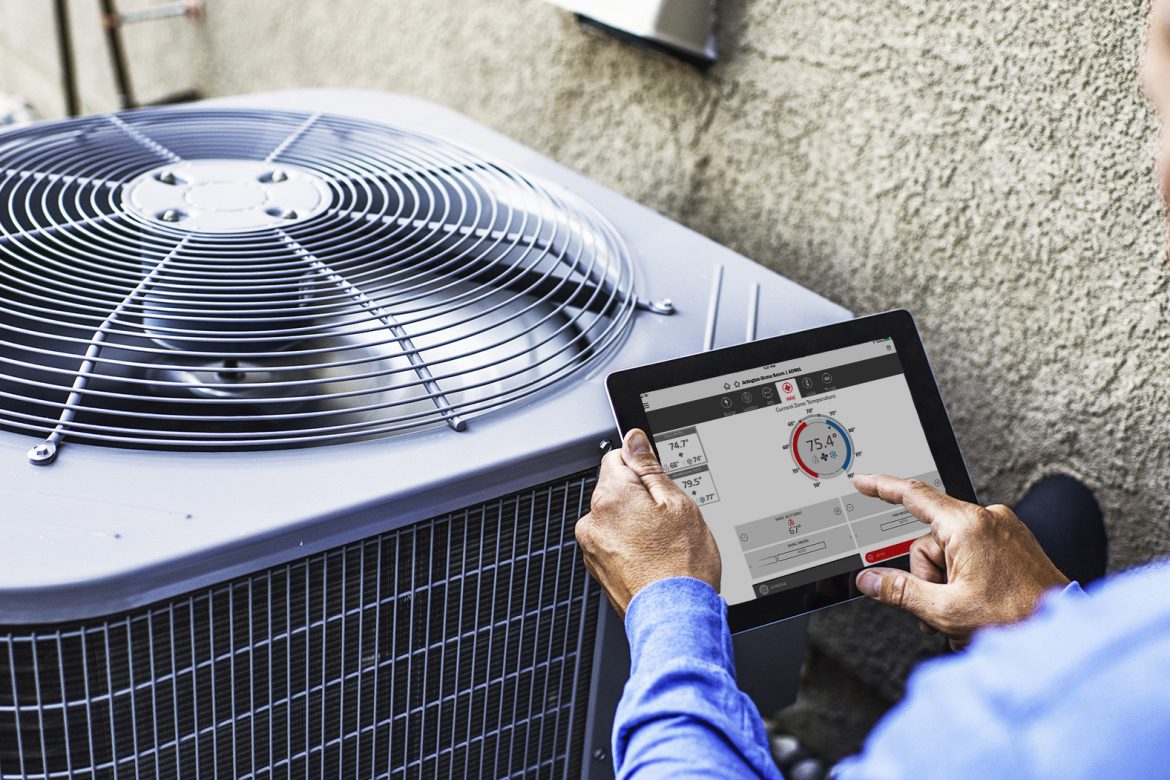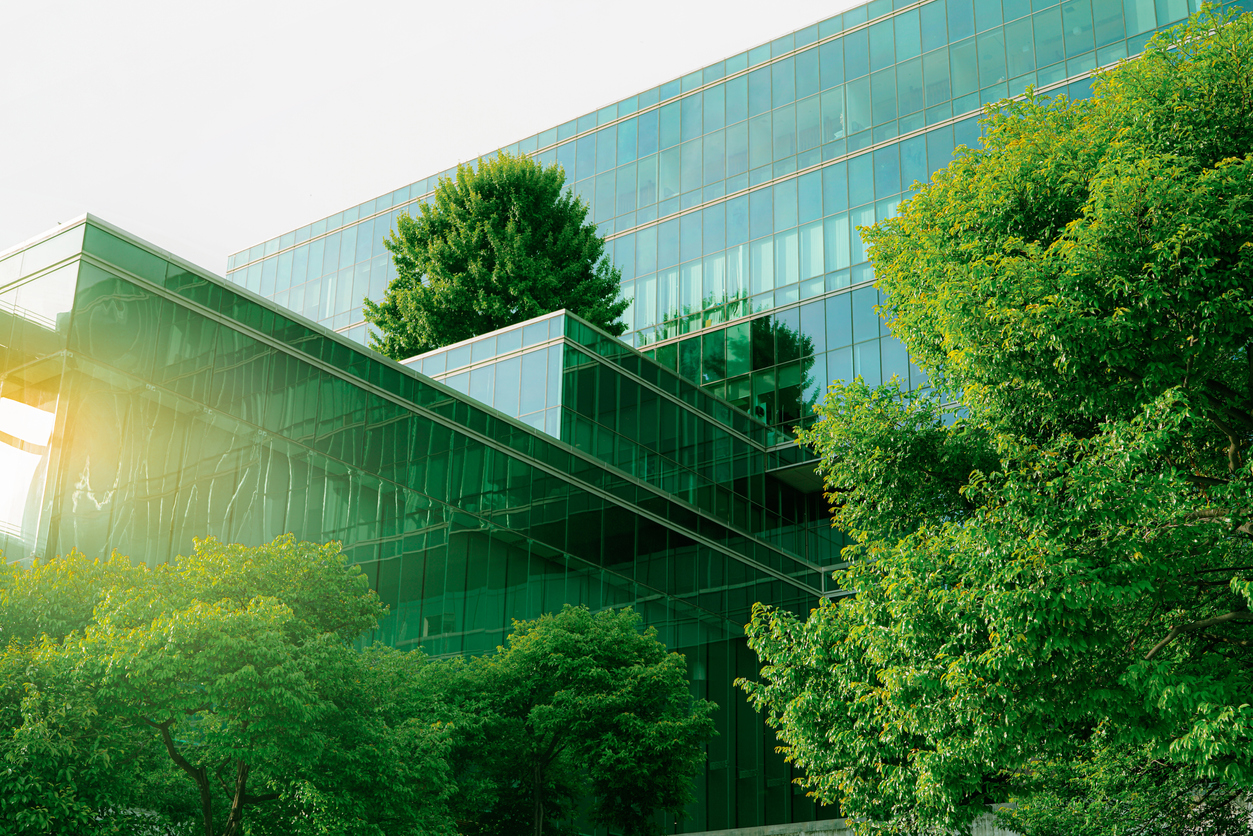Buildings are responsible for 76% of electricity use and up to 40% of all U.S. primary energy consumption. Unfortunately, on average, 30% of the energy used in commercial buildings is wasted. This means that targeting the utilization of energy delivered to buildings is a critical component of emissions reductions.
To tackle energy usage and waste, facility managers can use an energy audit to establish a baseline to understand their facility’s power needs and opportunities for efficiency gains. Typically, this starts with the HVAC and lighting systems. This audit will likely include an analysis of past energy bills. Combined, this data can be used to prioritize where and how power consumption can be reduced and what can be done to eliminate inefficiencies or upgrade to higher-efficiency systems. By targeting the easily addressable, low-hanging fruit on the list, facility managers can be on their way toward better performance and higher efficiency gains, often with little financial investment.
Depending on the nature of your building or business, the items below are typically where facility managers and business decision-makers start their energy savings projects.
Stay Ahead of HVAC Maintenance
HVAC maintenance is one of the most readily addressable ways to reduce your power consumption. Keeping your systems running smoothly will:
- Improve heating and cooling efficiency
- Help you avoid expensive repair costs in the future
Worn-out parts, dust-laden vents, and clogged filters usually do not require expensive replacements or upgrades; however, if left unaddressed, they can cause your HVAC system to work overtime and consume more energy than would otherwise be necessary.
Implement LED Lighting Control
Lighting is sometimes not considered a significant draw on energy, but it is one of the best ways to gain much-needed efficiency benefits.
LED lighting consumes 70-90% less energy than standard incandescent bulbs, and they can last anywhere between 50,000 to 100,000 hours.
This well-known advancement in energy-saving lighting, while seemingly trivial, is one of the easiest, fastest, and cheapest ways to achieve significant facility-wide savings. When available, tax breaks and subsidies can offset the costs of installing LEDs across your workplaces or business sites. To investigate what incentives are available for your property, contact your utility or local government. Often, utilities provide strong incentives for converting to LED lighting.
Use Automation and Sensors
The occupants of a building and their habits determine a large part of the building’s carbon footprint and energy consumption. To manage people and their daily routines, an Energy Management System can be installed. These systems implement schedules, sensors, and automation to generate and maintain efficiencies.
When coupled with occupancy sensors, dimmer switches, which provide control over the brightness levels of installed lights, are a great way to reduce energy waste by simply turning the power off when lighting is not needed. This approach is similar to outdoor lighting which uses motion sensors to trigger lighting for a specific time. Another method is to use timer-controlled lighting, which switches on and off based on a set schedule – with the schedule designed to optimize power use based on business and occupant-specific drivers.
GridPoint’s energy management system is designed to help business owners and facility managers lower their power consumption and business costs. A rudimentary example of this is load shedding by dimming LED lights whenever there is ample external light available, or when a space is not occupied. GridPoint enables this same sensing technology to be applied to your HVAC system, which often draws significantly more power than a typical lighting system.
HVAC monitoring and control begins with intelligent scheduling of your HVAC system’s setpoints. GridPoint’s intelligent setpoints are fed by a decade’s worth of data points from over 15,000 sites and proven results from enterprises and small businesses across the country. GridPoint’s advisory service schedules your HVAC system appropriately so that comfort and savings can be balanced. Smart thermostats allow this balance to be maintained, preventing rogue tenants from taking control of the system and modifying setpoints to be more energy-consuming. Once operational, GridPoint’s AI continuously learns the natural temperature drift of your building. It also learns how much time your HVAC unit needs to heat and cool a space. This makes your units run more efficiently without sacrificing your comfort while allowing operational anomalies to be detected before it’s 90 degrees outside and the HVAC suddenly stops working.
In Conclusion
An integrated network of technologies must be established for tech innovations such as GridPoint’s advanced proprietary algorithms to deliver continuous building efficiency. This includes everything from construction materials to light switches and management-level decisions on how and where resources operate or are used in a given workspace. How we build, maintain, and run our buildings is where we will see energy being used more efficiently. Each area of building design, construction, materials, and systems that go into a building determines the levels of energy efficiency possible at that site.
Interested in learning more? Connect with a GridPoint Solutions Expert here.
About GridPoint Solutions:
GridPoint is helping businesses leverage advancements in technology to create the buildings of the future. GridPoint provides a platform with which users can integrate distributed energy storage/generation systems, HVAC systems, lighting systems, and asset-level monitoring controls with real-time data from utility providers and onsite building- or user-specific data to create the most accurate and robust power consumption dataset in the industry.


